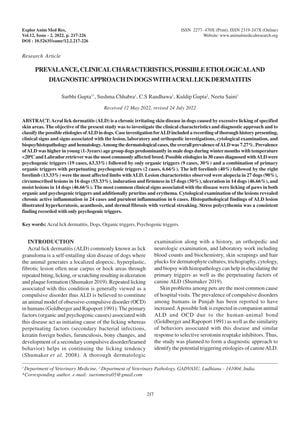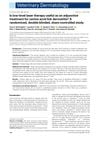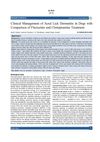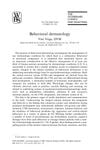Prevalence, Clinical Characteristics, Possible Etiological and Diagnostic Approach in Dogs with Acral Lick Dermatitis
December 2022
in “
Exploratory animal and medical research
”
acral lick dermatitis ALD alopecia circumscribed lesions induration ulceration moist lesions chronic active inflammation purulent inflammation hyperkeratosis acanthosis dermal fibrosis stress polycythemia hair loss skin lesions skin thickening skin ulcers wet skin lesions chronic inflammation pus inflammation thickened skin skin overgrowth skin scarring high red blood cell count

TLDR The study concluded that Acral lick dermatitis is most common in young male Labrador retrievers, often caused by psychological factors, and leads to skin inflammation and stress-related blood changes.
The study aimed to understand the clinical characteristics, diagnostic approach, and etiologies of Acral lick dermatitis (ALD) in dogs. It found that ALD had a prevalence of 7.27% among dermatological cases, with higher rates in young male dogs, especially Labrador retrievers, during colder months. The study involved 30 cases, with psychogenic triggers identified as the primary cause in 63.33% of cases, organic triggers in 30%, and a combination of both in 6.66%. The left forelimb was most commonly affected. Clinical signs included alopecia (90%), circumscribed lesions (53.33%), induration (50%), ulceration (46.66%), and moist lesions (46.66%). Cytological exams showed chronic active inflammation in 80% of cases and purulent inflammation in 20%. Histopathology revealed hyperkeratosis, acanthosis, and dermal fibrosis. Stress polycythemia was consistently associated with psychogenic triggers.



